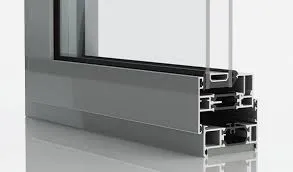Ornamental Iron Work | Custom Designs & Quality Craftsmanship
The Art of Ornamental Iron A Timeless Craft
Ornamental ironwork, a stunning blend of artistry and functionality, has captivated architects, designers, and homeowners for centuries. This traditional craft encompasses a wide range of products, including gates, railings, wrought iron furniture, and decorative elements that enhance both residential and commercial spaces. The allure of ornamental iron lies not only in its beauty but also in its durability and versatility.
Historically, the use of iron in decorative applications can be traced back to ancient civilizations. The Romans were among the first to utilize iron for architectural purposes, crafting intricate metal work that adorned their grand structures. As techniques evolved, blacksmiths in the Middle Ages began to specialize in ornamental ironwork, producing exquisite pieces that reflected the intricate designs of the Gothic and Renaissance styles. This craftsmanship has continued to evolve, incorporating influences from various cultures, leading to a wide array of styles and interpretations.
One of the defining features of ornamental iron is its ability to be shaped and molded into elaborate designs. Thanks to the skills of experienced artisans, iron can be transformed into swirling patterns, floral motifs, and geometric shapes. This flexibility allows for endless customization, enabling homeowners to create unique pieces that reflect their personal style. From elegant wrought iron gates that serve as a grand entrance to ornate stair railings that add a touch of sophistication, ornamental ironwork enhances the aesthetic appeal of any space.
ornamental iron

Moreover, the durability of iron makes it an ideal choice for outdoor applications. Unlike other materials that may succumb to the elements, ornamental iron can withstand harsh weather conditions while retaining its beauty over time. When properly maintained, these iron creations can last for decades, providing both beauty and security. This longevity makes ornamental iron a wise investment for homeowners looking to enhance their property’s curb appeal.
In contemporary design, ornamental iron continues to play a significant role. Modern architects and designers are incorporating traditional techniques into forward-thinking designs, creating a harmonious blend of old and new. Whether through minimalist railings that promote open sightlines or intricate gates that serve as focal points, ironwork is making a resurgence in today’s architectural landscape. This revival is not just about aesthetics; it represents a growing appreciation for craftsmanship and the art of making.
Additionally, the sustainability aspect of using iron cannot be overlooked. Iron is a recyclable material, making it an eco-friendly option for construction and design. As more individuals and businesses seek to reduce their carbon footprint, the use of ornamental iron reflects a commitment to sustainability without compromising on style.
In conclusion, ornamental iron is a remarkable craftsmanship that transcends time and trends. Its captivating designs, durability, and sustainable qualities make it a preferred choice for enhancing both residential and commercial spaces. As we move forward, the continued fusion of traditional techniques with modern styles will ensure that ornamental iron remains a significant element in the realm of architectural design. Whether gracing the entrance of a historic estate or adding character to a contemporary home, ornamental ironwork celebrates the beauty of craftsmanship, making it a timeless addition to any environment.
-
Wrought Iron Components: Timeless Elegance and Structural StrengthNewsJul.28,2025
-
Window Hardware Essentials: Rollers, Handles, and Locking SolutionsNewsJul.28,2025
-
Small Agricultural Processing Machines: Corn Threshers, Cassava Chippers, Grain Peelers & Chaff CuttersNewsJul.28,2025
-
Sliding Rollers: Smooth, Silent, and Built to LastNewsJul.28,2025
-
Cast Iron Stoves: Timeless Heating with Modern EfficiencyNewsJul.28,2025
-
Cast Iron Pipe and Fitting: Durable, Fire-Resistant Solutions for Plumbing and DrainageNewsJul.28,2025
-
 Wrought Iron Components: Timeless Elegance and Structural StrengthJul-28-2025Wrought Iron Components: Timeless Elegance and Structural Strength
Wrought Iron Components: Timeless Elegance and Structural StrengthJul-28-2025Wrought Iron Components: Timeless Elegance and Structural Strength -
 Window Hardware Essentials: Rollers, Handles, and Locking SolutionsJul-28-2025Window Hardware Essentials: Rollers, Handles, and Locking Solutions
Window Hardware Essentials: Rollers, Handles, and Locking SolutionsJul-28-2025Window Hardware Essentials: Rollers, Handles, and Locking Solutions -
 Small Agricultural Processing Machines: Corn Threshers, Cassava Chippers, Grain Peelers & Chaff CuttersJul-28-2025Small Agricultural Processing Machines: Corn Threshers, Cassava Chippers, Grain Peelers & Chaff Cutters
Small Agricultural Processing Machines: Corn Threshers, Cassava Chippers, Grain Peelers & Chaff CuttersJul-28-2025Small Agricultural Processing Machines: Corn Threshers, Cassava Chippers, Grain Peelers & Chaff Cutters












